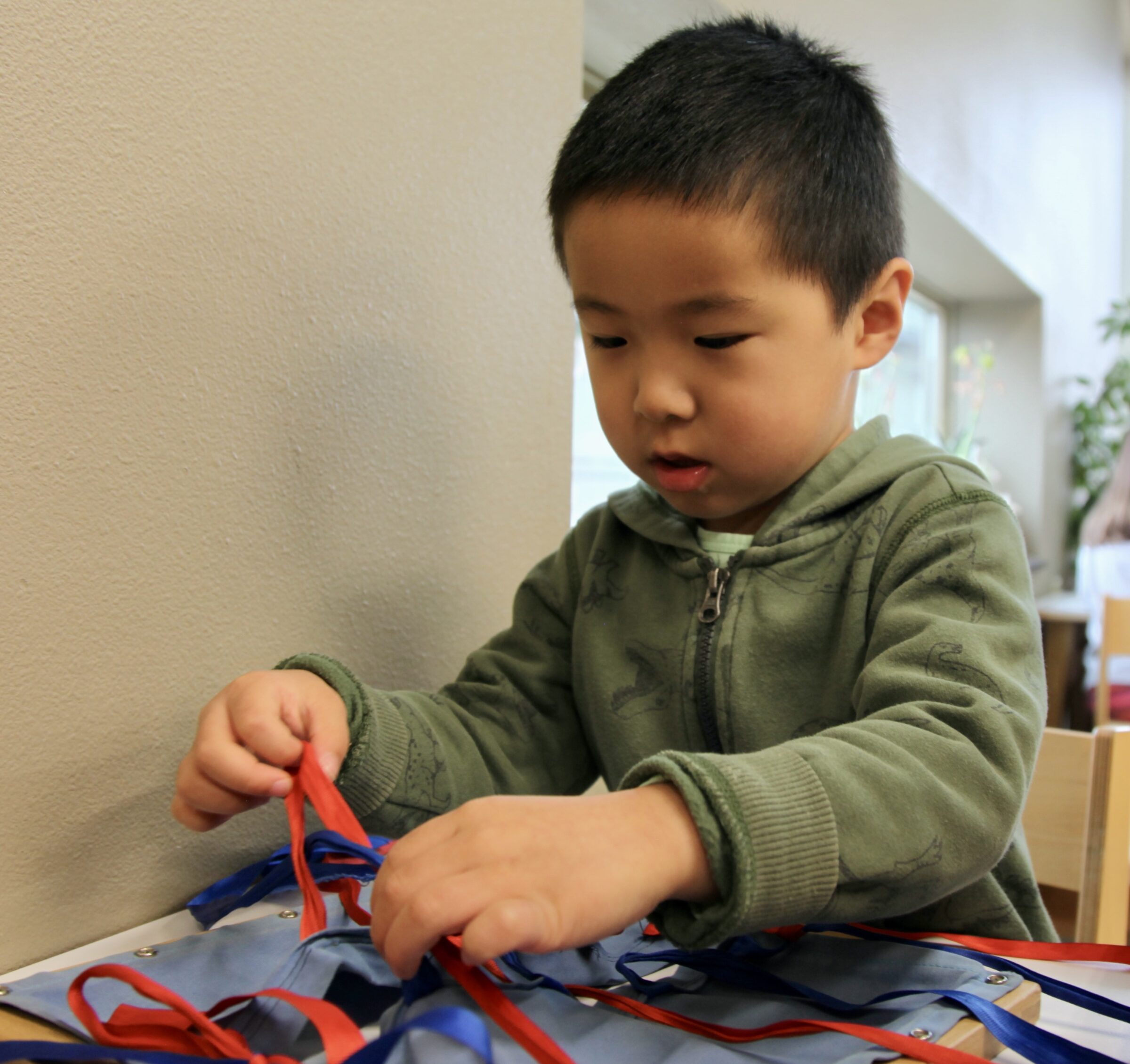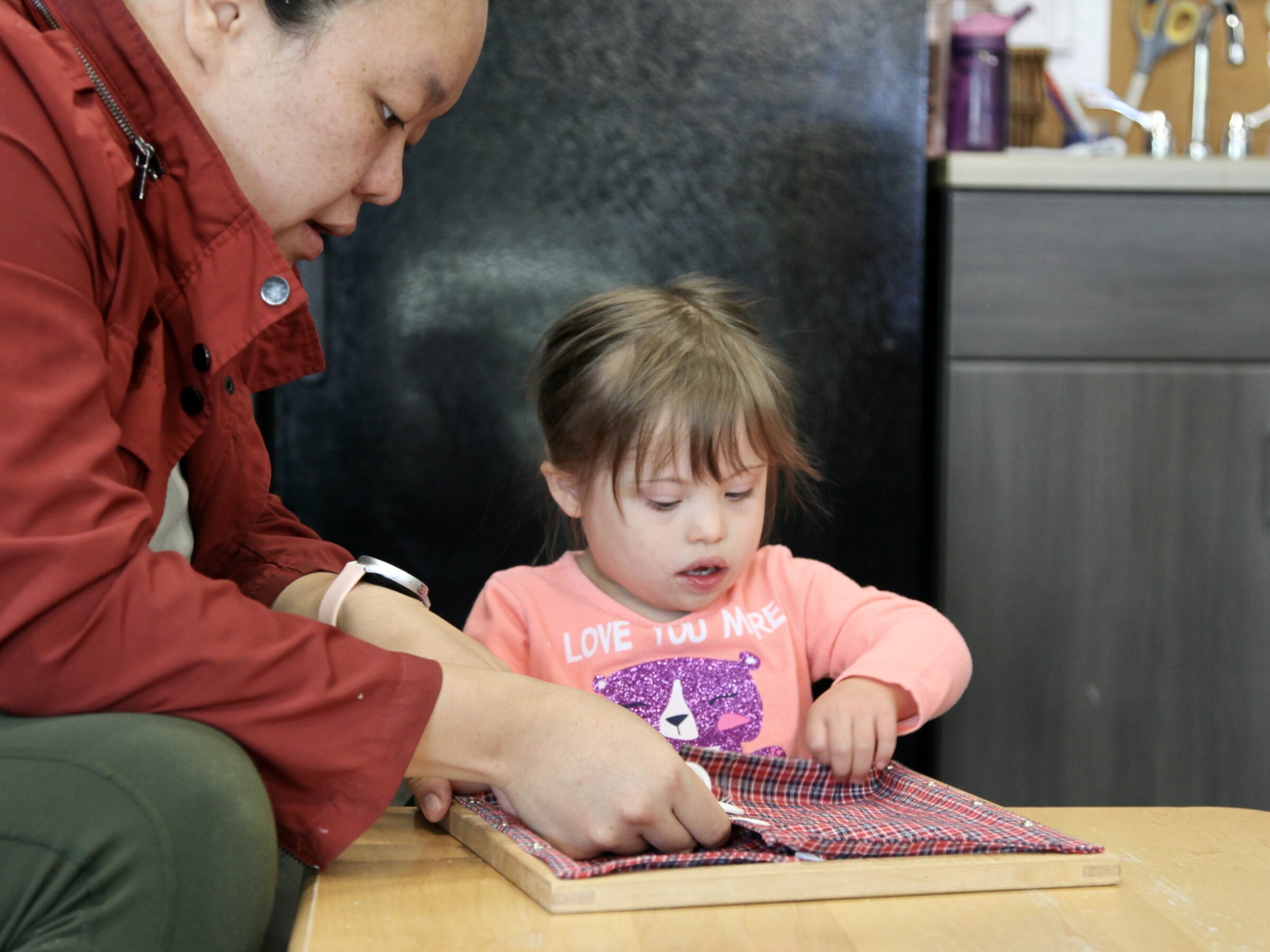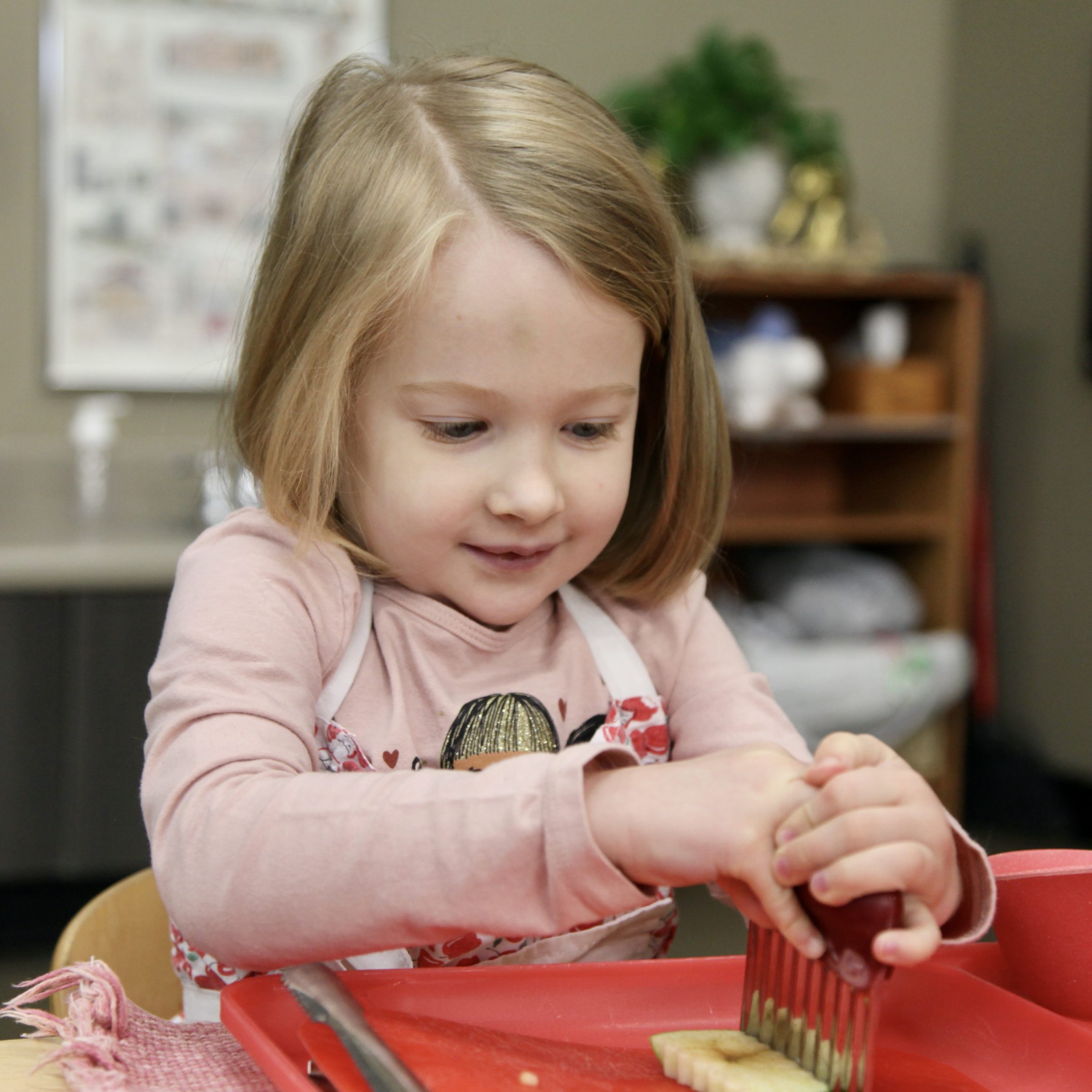Things That Are Totally Montessori
Podcasts
For a podcast of this post, listen here or subscribe on iTunes.
It’s easy to think Montessori is a place, or a philosophy, or a set of materials. Montessori is a way of interacting with children, with the world around us.
Particularly when we’re out of school, it’s important to remember all the things that really are “Montessori.” We don’t have to do anything different, really. We don’t have to buy or prepare. We just get to engage.
We made a list of activities that really are Montessori. These are things we all do in everyday life, but we’ve broken it down by age of what children might be capable of, or interested in doing.

A few quick disclaimers:
- We wrote this with the whole team, including three parents of primary-age children (Primary is 2.5-6, in case you’re curious, though these three children are 2.5, 3.5, and 4). What a child is capable of, willing to do, curious about, are all very different, and not necessarily dependent on age or home environment! You know your child best. If you think they’d be capable of the tasks we suggest for an older or younger child, go with your gut!
- No pressure! One suggestion that engages a child for a solid half hour in one household received a snort and a giggle from another parent. Hopefully these get the wheels turning of what might serve your household!
- Know your parenting style. If it’s vitally important that folded laundry is perfect, engage a child in a task they can feel successful with and proud of, like sorting clean laundry for you to fold, or folding towels while you fold more complex items. If you engage your child in cooking and baking, what’s a safe learning experience you’re comfortable with? Accidentally using baking soda rather than baking powder for an emergent reader? An eggshell or two in the omelette a child made entirely themselves?
- Set expectations low. This isn’t a time for perfect or worry or stress. The process is the goal. Consider what your child has done before, or even seen done, before asking it of them. Maybe a child actually doesn’t know where clean laundry happens! Engage bit by bit.
- Set your child and yourself up for success! Measure flour into a separate bowl rather than into the mixing bowl. Do laundry with a child, even an older child, when there are items that really cannot be laundered together. Plan to do a thorough disinfect after children have gone to bed, even with the most well-intentioned and attentive three-year-old helper.

CLEANING AND TIDYING
1.5
- Cleaning a spill. Be sure to use language of “a spill! Let’s get a cloth together!” rather than “oh the horror! No more milk for the rest of the week!”
- Helping put away items. Taking diapers to the bathroom, putting cans on a low shelf, etc.
- Putting things back on a shelf or in a bin with direction. “We’re done with this toy, now it’s time to put it away.” “After the blocks are put away, we can read a story.”
- Wiping surfaces. A spray with half water and half vinegar (add a few drops of essential oils if you like!) will clean most surfaces. Hydrogen peroxide will disinfect, if you’re cleaning for disinfecting.

2.5
- Washing lower surfaces like baseboards, cabinets, lower shelves
- Setting and clearing the table
- Practice using a dustpan or handheld vacuum
- Emptying small garbages
- Shoe cleaning, such as rain or snow boots
- Rinsing dishes at the sink or in a basin of sudsy water
- Wiping counters

3.5
- Gathering “table accessories,” such as ketchup, salt and pepper, or decorating with napkins in rings, flower arrangements, or candles.
- Helping with laundry (more later!)
- Caring for family pets
- Unloading dishwasher
- Giving lovies or babies a bath, helping with bathtime for baby siblings

4.5+
- Helping pick up dog poop, help with walks
- Helping wash the dog or the car
- Organizing books by theme or color
LAUNDRY
1.5
- Putting laundry in washer, move from washer to dryer
- Taking clothing off and put in hamper
- Pushing laundry basket into laundry room

2.5
- Guided putting away (socks go in this drawer. This is a shirt; shirts go here)
- Folding towels and wash cloths
- “Practical pouring,” such as pre-measured detergent (please ensure detergent and other chemicals are stored out of children’s reach)
- Basic sorting, such as by family member with clean laundry, or by color or item type (such as jeans, or bathroom linens) for dirty laundry
3.5
- Matching and pairing socks
- Folding a tee or leggings
- Hanging clothes
- Switching out towels
4.5+
- Helping to strip and remake the bed
- Gather all laundry from rooms

COOKING AND BAKING
1.5
- Slicing a banana
- Peeling citrus
- Stirring — usually a very small amount in a very large bowl
- Peeling an egg
- Spreading on bread — cream cheese, nut butter, jelly. Tip: give a child a small portion or a ramekin, rather than the whole jar
- Scooping berries from a bowl of water using a sieve
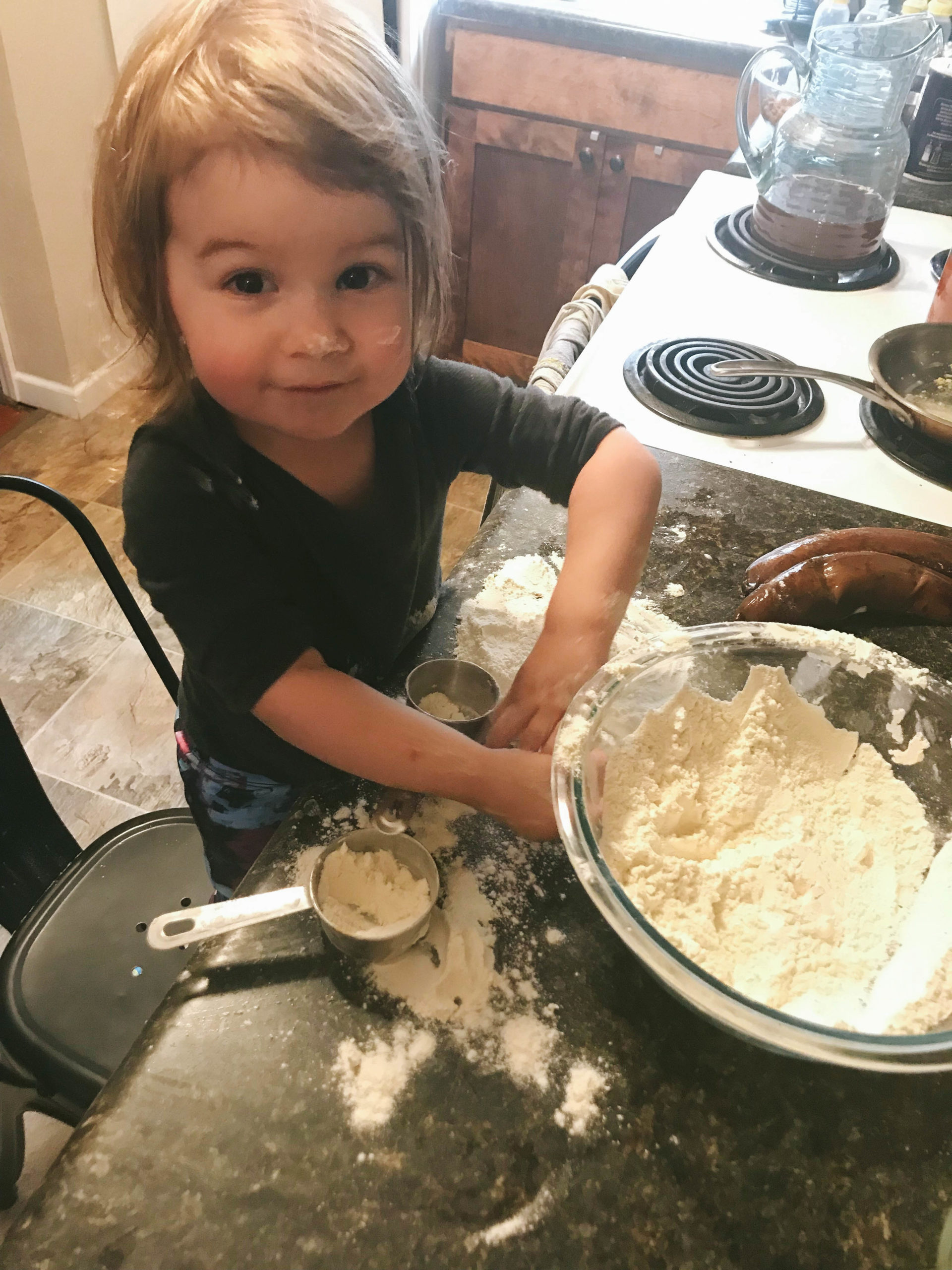
2.5
- Helping to make coffee or tea
- Chopping “soft” things such as cucumber, bell pepper, apple slices, avocado
- Mashing — such as cooked potatoes or cauliflower
- Practice cutting with scraps
- Squeezing or juicing lemon
- Washing produce
- Turn the oven light on for a child to check on dinner, what’s baking, etc.
- Putting food on toothpicks or skewers
- Grinding salt or pepper

3.5
- Helping with a recipe, such as these easy drop biscuits
- Opening a can
- Peeling veggies
- Preparing tuna, chicken, or egg salad. For a vegan option, you can prepare a can of chickpeas (also known as garbanzo beans) just the same!
- This is a nice age to start introducing measuring cups and spoons, or a food scale
4.5+
- Preparing pancakes or salads, either vegetable or fruit based
- Introduce knife skills, oven and stove safety
- Use of a toaster or toaster oven
- Provide opportunities to develop palate and tastes, such as salting food, adding toppings to oatmeal, experimenting with recipes, trying foods they show interest in preparing or eating
- Evaluate ripeness (gently squeezing an avocado, observing color in a banana, pressing a pear near the stem, etc)
- Peeling garlic or onions
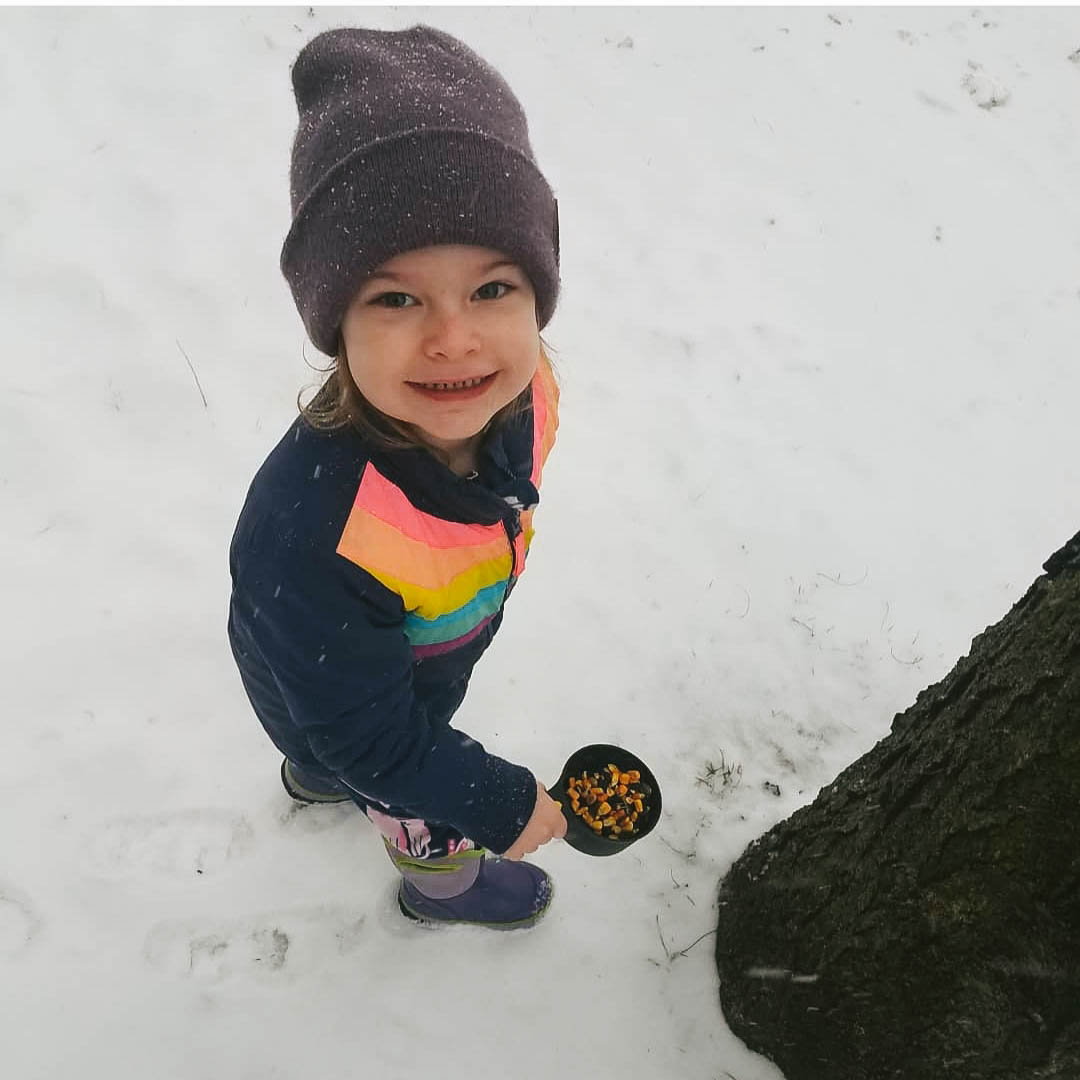
Written by:
Charlotte Snyder

